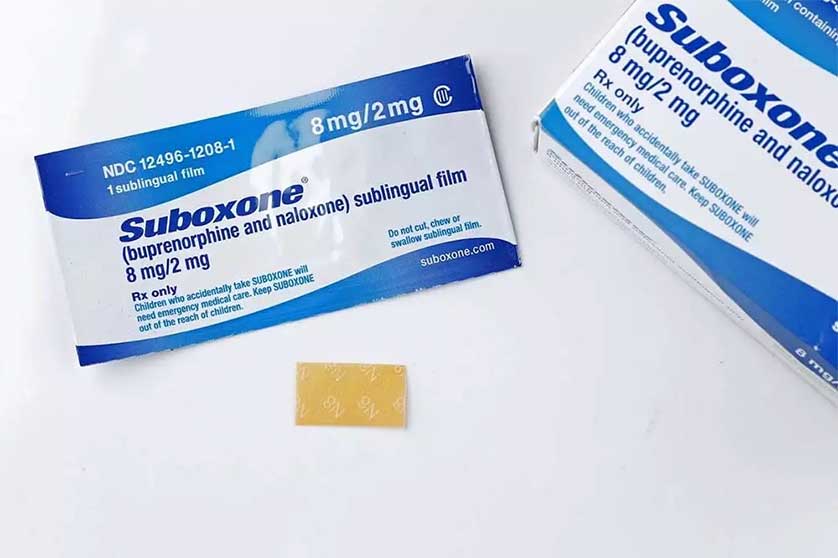Suboxone Dosage Guide For Opioid Dependence

Medically Reviewed By: Manish Mishra, MBBS

Written by: Fikret Terzic MD, MS
Suboxone dose schedules for opioid dependence may involve taking 8 mg to 24 mg of Suboxone daily. Depending on the presence of opioid withdrawal symptoms and adverse events, your dose of Suboxone may be decreased or increased accordingly.

Suboxone sublingual film comes in 2 milligram (mg), 4 mg, 8 mg, or 12 mg formulations. Patients taking Suboxone to manage opioid withdrawal symptoms may take between 8 mg to 24 mg of Suboxone daily, which can amount to about 3 doses per day.
Suboxone is a buprenorphine/naloxone sublingual tablet that can help treat opioid withdrawal syndrome. It can be prescribed and distributed by opioid use disorder treatment centers.
If you take Suboxone, your daily dose of buprenorphine may be monitored and adjusted depending on how you react to the drug.
Suboxone is a Schedule III controlled substance with a moderate potential for illicit opioid use. Proper use of buprenorphine/naloxone products can maximize the chances of successful opioid addiction recovery.
Determining Your Baseline Suboxone Dose
Opioid dependent patients entering Suboxone maintenance treatment may receive a low initial dose of 2 mg buprenorphine in a once-daily dose.
The amount of Suboxone you receive at first may depend on the severity of your withdrawal symptoms, and whether you were dependent on short-acting opioids or long-acting opioids.
Depending on your reaction to this first dose, higher doses may be administered after the first day until an appropriate maintenance dose and stabilization are reached. Your treatment plan may involve dose adjustment as your health and withdrawal symptoms are monitored.
Proper Suboxone use may involve sublingual administration, where the film is placed under the tongue and dissolved. Suboxone film may also be approved for buccal use, where the film is placed on the inside of the cheek and dissolved.
Signs Your Suboxone Dose Is Too Low
The treatment of opioid dependence may involve the discontinuation of opioid analgesics. Although buprenorphine can bind to the same opioid receptors as traditional opioid drugs, the effects of buprenorphine may not be as strong as those of these drugs, leading to the onset of chronic pain.
Chronic pain and persistent opioid withdrawal symptoms, such as insomnia, vomiting, and muscle aches, can be signs that your doctor should increase your maintenance dose of Suboxone.
Signs Your Suboxone Dose Is Too High
If your daily dose of Suboxone is too high, you may experience side effects such as:
- drowsiness
- sedation
- constipation
- impairment
- headache
- insomnia
- respiratory depression (trouble breathing)
- hypotension (low blood pressure)
- serotonin syndrome
Your withdrawal symptoms, such as opiate cravings, may also worsen with high doses of Suboxone. If you experience adverse reactions to Suboxone, your treatment provider may lower your dose.
Suboxone Use In Special Populations
Suboxone may not be recommended for use in patients with severe hepatic impairment (liver damage). Pregnant women and breastfeeding mothers may also not be given Suboxone, as buprenorphine may reach breast milk through the bloodstream and be transferred to infants.
Talk to your treatment provider about your drug use history before starting Suboxone maintenance treatment. Suboxone can cause adverse effects when taken with prescription drugs such as CYP3A4 inhibitors, certain antidepressants, and benzodiazepines.
Suboxone may also be contraindicated in patients with a known hypersensitivity to buprenorphine or naloxone.
If you or a loved one are struggling with opioid dependence, contact Ohio Recovery Center to learn about our individualized opioid use disorder treatment program today.
- Food and Drug Administration — SUBOXONE® sublingual film https://www.accessdata.fda.gov/drugsatfda_docs/label/2010/022410s000lbl.pdf
- The Ochsner Journal — Suboxone: Rationale, Science, Misconceptions - PMC https://www.ncbi.nlm.nih.gov/pmc/articles/PMC5855417/
- Suboxone.com — Prescribing Information | SUBOXONE® (buprenorphine and naloxone) Sublingual Film (CIII) https://www.suboxone.com/pdfs/prescribing-information.pdf

